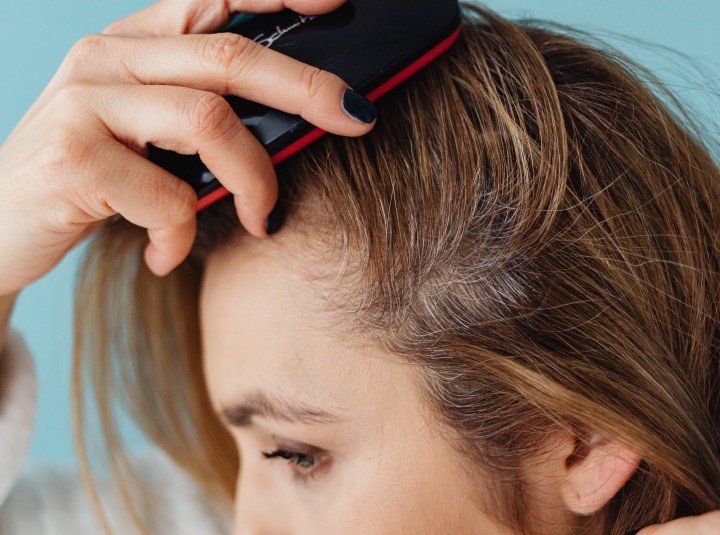Most men abhor hair loss either due to natural male pattern baldness, alopecia, or other disease conditions that manifest with hair loss. Fortunately, technology has provided a means for solving this problem through hair transplants. But unfortunately, the procedure usually leaves hair transplant scars that may not be palatable to the eyes.
In this article, I’ll be divulging the secrets of hair transplant scars hiding techniques so that you can adorn that hairstyle you’ve always wanted to.
Key Takeaways
Hiding hair transplant scars is possible using either the hair transplant scar removal method or the hair transplant scar concealment technique. The hair transplant scar removal technique employs the use of plastic surgery to reduce the size of the scars.
Although this technique may be successful in the short term, during old age with laxity of the scalp, the scars may become more noticeable.
Hairs Transplant Scars Removal
You can carry out Hair Transplant scars removal using various methods. Some methods can decrease the scar size formed after the follicular unit transplantation surgery. Unfortunately, the success rate is not 100 percent, plus a little scarring will remain.
Another procedure is grafting some hair follicles into the follicular unit transplantation scar through the follicular unit extraction method. However, the procedure’s success rate depends on the thickness of the scar tissue.
In addition, drugs can reduce the hair transplant scar to increase the success rate in some cases. Furthermore, scarred skin tissue does not retain grafts as effectively as healthy skin does.
Cosmetic concealing of scars is another method that is effective. This involves growing hair over the donor skin.
Hair Transplant Scar Concealment
This procedure involves camouflaging the hair transplant scars so that nobody notices them. Three methods are commonly used and are Hair transplant scar micro-pigmentation, Tricopigmentation, and Laser treatment.
Hair Transplant Scars Micropigmentation
This method employs a disguising technique to hide hair transplant scars. Hair transplant scar micro-pigmentation(SMP) is also referred to as scalp hair tattooing or medical hairline tattoo.
In this permanent, non-invasive procedure, a natural pigment with the same color as your hair is injected into the scalp skin at the epidermis level. Multiple minor dots are tattooed on your skin. As a result, it mimics the appearance of your natural hair, giving the impression that your hair is thicker.
The procedure helps camouflage the scarred tissues that developed after extraction or transplantation of the follicular unit. Hair transplant micro-pigmentation does not require surgery, nor does it in itself cause scarring.
It is a well-proven technique for concealing hair transplant scalp scars. It’s also used for alopecia, hair thinning, and receding hairline.
Depending on the size of the hair transplant scar, it may require many hair transplant scar SMP sessions to complete. In addition, there may be some discomfort during the hair transplant scar micro-pigmentation.
Tricopigmentation
Tricopigmentation is a temporary type of hair transplant scar SMP. Because the ink for this procedure is injected into the uppermost layer of the dermis and not the epidermis, the pigmentation is temporary. On average, the length of time can be between six months to three years, depending on the clinic that does the procedure. It is usually uncomfortable.
Laser Treatment
Laser treatment is usually used as an adjunct to either hair transplant scar SMP or Tricopigmentation. This procedure decreases the size of the hair transplant scalp scars, so that hair transplant scar micro-pigmentation or tricopigmentation is more effective.
The laser is directed to the hair transplant scar and removed. The procedure also helps to stimulate your dermis to produce collagen, which boosts your skin’s appearance and elasticity. The success rate of laser treatment varies from individual to individual.
Hair Transplant Scar Healing Time

Hair transplant scar healing time varies depending on the transplant technique. There are two surgical techniques for hair transplant. The follicular unit transplantation and the follicular unit extraction.
The follicular unit transplantation technique takes a longer time to heal because the procedure uses a strip of scalp with hair from the donor site. As a result, the wound and scar are bigger. Healing usually takes up to six weeks to complete, and it may be more depending on the size of the strip.
In follicular unit extraction, hair follicles are removed from the donor area, usually at the sides or back of the head. Consequently, it doesn’t require a strip of skin. Healing is fast in this procedure, taking between two to 14 days.
Conclusion
Hair transplant scars can be quite a menace. However, with techniques like plastic surgery for hair transplant scar removal and hair transplant scalp micro pigmentation, you can get rid of them.
So, which procedure appeals to you the most? Let me know in the comments section below.

